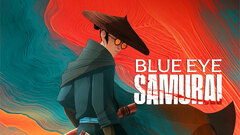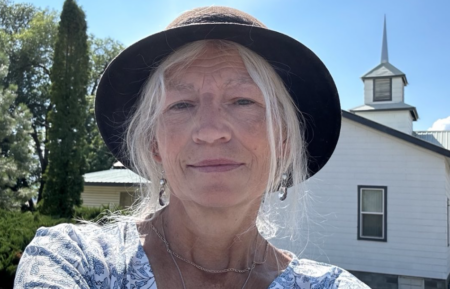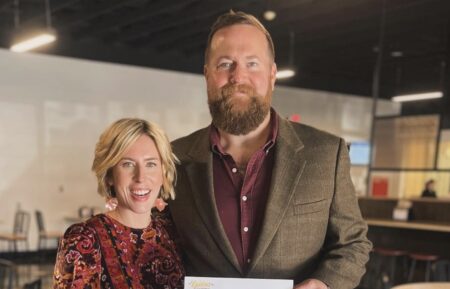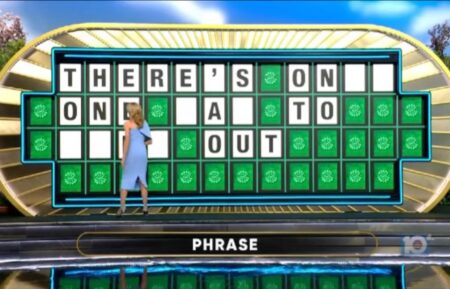Netflix’s ‘Blue Eye Samurai’ Creator Says Show Is ‘Something Different’ in the Landscape of Animation
There are plenty of exciting sword fights in Blue Eye Samurai, Netflix’s impressive new animated series (it’s earned 100% Fresh on Rotten Tomatoes), but there’s much more in this compelling, critically acclaimed new show.
To start, it’s more adult than family-friendly, with graphic sex as well as the expected violence. Moreover, the story about Mizu (Maya Erskine), a despised and disguised– mixed-race young woman and sword master, is also completely original, based neither on a manga, comic, novel, or folk tale.
The Canadian-American series was created and written by married couple Amber Nozumi, who has Japanese ancestry, and Michael Green. The voice cast, except for Kenneth Branagh, who plays an American character, is all Asian-American, including Star Trek’s George Takei, Masi Oka (Heroes), Randall Park (Fresh Off the Boat), Stephanie Hsu (Everything Everywhere All at Once), Ming-Na Wen (Mulan), and Harry Shum Jr. (Grey’s Anatomy).
Nozumi and Green tell TV Insider all about their show.
Can you set up Blue Eye Samurai for us?
Nozumi: It’s a tale set in 1657 Japan [the Edo period) when borders were closed to all foreign influence and someone mixed race [has] never been seen. Our hero, Mizu, must live a life in disguise as she seeks revenge on those she considers responsible for making her “a monster, a creature of shame.” Mizu is singularly minded on exacting brutal, bloody revenge. She believes it’s the only way her soul will rest. But what she needs is acceptance from others and, more importantly, herself. All of our characters are on a similar journey — seeking a sense of agency and belonging in the world.
It’s not a didactic show by any means, but among the many themes, racism and sexism stand out. Are those major drivers for your characters? Mizu not only wears dark glasses to cover her blue eyes but disguises herself as a male warrior.
Nozumi: In Mizu’s case, it’s not being mixed race that has made her a monster, as she believes; it’s the internalized racism and sexism that has limited her options, forcing her into a life of physical and emotional disguise. But this is a fictional story. When we see Mizu unleash her rage, it’s supposed to be fun and perversely therapeutic.
The story is completely original. How did it come about it?
Green: People seem so surprised that Blue Eye Samurai is an original work, which is as much a product of studios being conservative as the audience not always showing up for something new — even when they keep saying, “We want something new!” We were lucky enough to pitch [the idea] when Netflix not only had a huge appetite for adult animation but for original content. They gambled on a big idea, and our creative team, and the result is something actually different from anything else before it.
Who is your expected audience? It’s not a kids’ show; it has a fair amount of violence, nudity, sex, and other adult themes.
Green: The story we wanted to tell determined the content, not the other way around. We are hoping for the widest audience possible. Not kids, of course, but of teen and adult viewers. Both fans of animation and people who don’t think of themselves as “people who like animation.” Ideally, people forget they are watching animated characters and just steep in the world and their journeys.
Despite the revenge theme, there’s some lovely humor in the show, mostly provided by a wonderful, equally shunned character named Ringo (Oka).
Green: People can mistake “drama” for “humorless.” A character like Ringo is so much fun to watch — and write — because he is so irrepressibly himself no matter what happens. Also, once we knew he’d be played by Masi Oka, we made sure to leave space for Masi to bring the light he always brings.
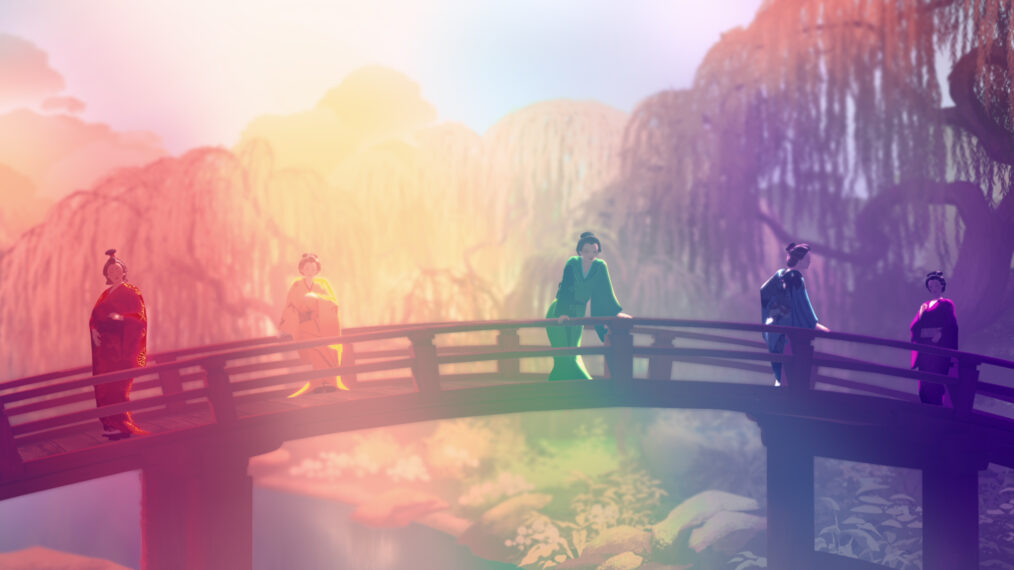
NETFLIX
How would you describe the animation; it’s really beautiful.
Nozumi: We give all the credit for the animation style to our supervising director, Jane Wu, and the team she assembled. We wanted it to look like nothing the world had ever seen. Jane beautifully executed her vision for what she calls “animation with a live-action attitude.” She storyboarded the show as if it were live-action, complete with camera angles and lensing. She brought in stunt choreographer Sunny Sun, who filmed the fight scenes with his team, and then our animators turned that into what you now see on the screen in all its violent, bloody glory.
Your TV resume is in live-action shows like American Gods. Why do this story in animation?
Green: We knew instinctively animation was the best, if not [the] only way to tell the story we saw in our heads. That meant we would have to learn an entirely new form. But for us, that was a plus. Funny enough, American Gods was my main animation experience coming into this, as we did an animated teaser in one episode directed by the great Vincenzo Natali.
Your voice cast is amazing. Was Blue Eye easy to cast?
Green: Almost every single actor we asked said yes; I think they were all excited to be part of something that so strongly represents Asian culture. We can witness that in their performances. I couldn’t say who exactly was the most exciting to get when you’re in the presence of so much profound talent, but I will say that our team definitely geeked out when George Takei was recording.
Are the wonderful costumes and set designs and food-lots of noodles—true to the time and place?
Green: We did everything we could to make sure the food and the costumes were as accurate and as sumptuous as we could possibly make them. Bringing costume designer Suttirat Larlarb onto the team was one of our best early decisions because we knew she would dive deep and excavate gorgeous works. Suttirat would host these costume history presentations for each episode where she would take us through the contexts of characters’ social strata [and] what their actually daily lives would be — we’d all be mesmerized while being educated. Maybe we’re too obsessed with food—and noodles, but so much of this show is about the sumptuous process, noodle making—and sword smithing. We always said we want people to leave an episode of this show starving like they’d have to order a bowl of soba as soon as the credits rolled. We worked with food historian Eric Rath on the details to make sure we were period-accurate. And luckily, it turned out the food of the time was gorgeous. It was the start of a lot of fast food — with a lot of foods familiar today.
Is this a limited series, or are you hoping for more seasons?
Green: Blue Eye is definitely designed to be an ongoing series. We are dying to tell Mizu’s continuing story. We have season 2 mapped out. All we need is enough of an audience to want to see it!
Blue Eye Samurai, Streaming Now, Netflix


